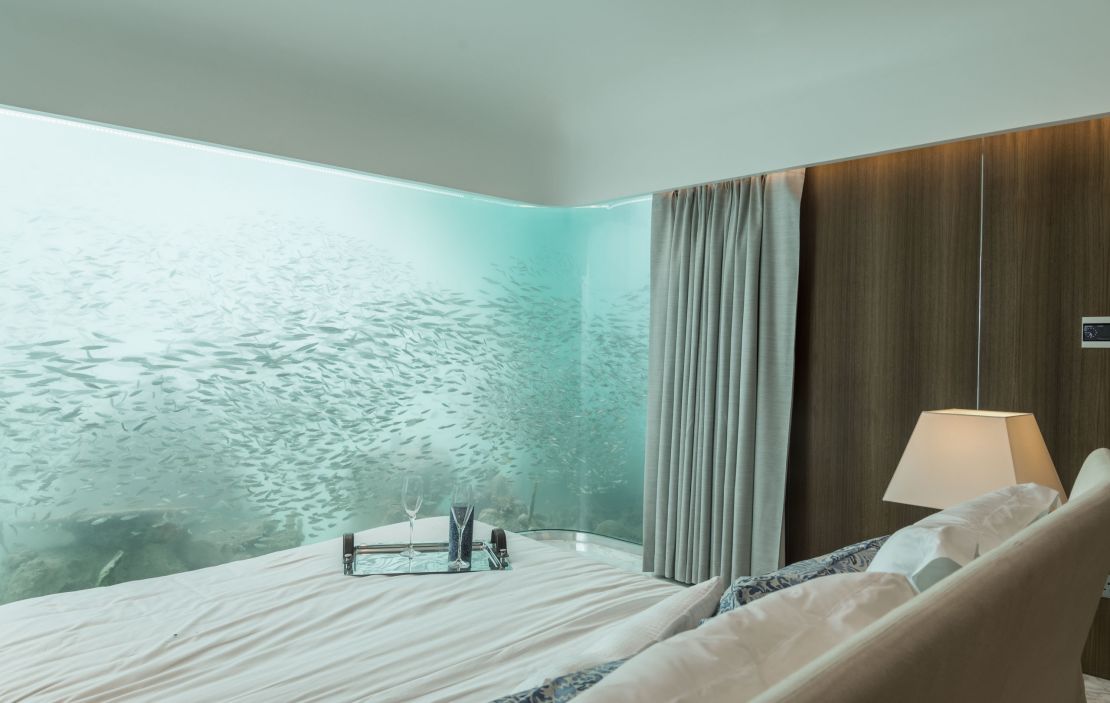Story highlights
The Floating Seahorse villas are part of a new resort in Dubai
131 of these innovative structures will be completed by the end of 2017
The homes feature an entire floor submerged underwater
See the gallery above for other designs of floating homes from around the world
From the Burj Khalifa to the Infinity Tower, Dubai is famous for its astonishing architecture. But the city’s most innovative structures yet aren’t reaching for the sky – they’re diving into the ocean.
Originally introduced at the Dubai International Boat Show in 2015, the Floating Seahorse villas are unlike anything you’ve seen.
For starters, the villas float like anchored boats – albeit without listing from side to side.
And each three-story retreat features an entire floor submerged beneath the sea, with two enormous windows – each measuring 269 square-feet (25 square-meters) – that provide front-row seats to marine life.
“This is an original idea, to have a boat villa with a submerged floor where you can experience the feeling of stepping down into the master bedroom, be in contact directly with the walls, and see the reef, the marine life all around you – you’re surrounded by it,” says the project’s architect, Gianfranco Rasile.
A lifelong project
Designed and constructed by real estate and property development company Kleindienst, the villas are part of the Heart of Europe resort, which comprises six man-made islands, more than a dozen hotels, and the world’s first climate-controlled streets.
Around 50 floating abodes will be ready at the end of this year, with a total of 131 villas expected by the end of 2017.
The chairman of Kleindienst, Josef Kleindienst, says he has been dreaming of these underwater retreats for more than 30 years. Surprisingly, the imaginative entrepreneur is not a diver or a sailor – he’s actually afraid of the ocean.
“I never go diving, or swimming even, but I have always been interested to see what’s under the sea – and why [people] go around the world to dive,” he says.
Inspired by the mysteries of the deep, Kleindienst studied underwater projects for decades until he finally had the chance to bring his vision to life in 2008 as part of the “The World” – an ambitious mega-development off the coast of Dubai that features 300 reclaimed islands that mimic a map of the globe.
“We started designing the villas in 2008 but the design changed several times. We could not find the ‘wow’ effect, so we started a competition. We invited architects from 10 different countries to submit ideas, and Gianfranco’s theme was the one that really made us all say ‘wow’,” says Kleindienst.
It all hangs in the balance
You might expect the Floating Seahorse villas to bob up and down like a boat and cause sea sickness in a storm. But on board, it’s unexpectedly still.
The project architect, Gianfranco Rasile says the architectural team grappled for months to achieve this neutral buoyancy. The work required careful calculations and dozens of trial runs in a simulated environment in Dubai Maritime City.
“People think it’s sitting on the seabed,” says Kleindienst. “But it’s [anchored] at least 1.5 meters off the bed, and it’s always going up and down every day with the tide movement.”
As for the underwater windows – at just 9.5 centimeters thick, it looks as if there’s nothing between you and the fish.

However they’re not made of glass, as that could not withstand the water pressure. Searching for a solution, the team looked to aquariums and submarines and used acrylic instead. As a result, the construction has crystal-clear views and the durability to withstand years in salt water.
“The Arabian Sea is very salty so we’re really restricted in the material we can use,” says Rasile. “Inside, if you look at the material we’re using —?it’s teak and marble. You have to use materials that can resist the temperature and the salt in the atmosphere.”
Under the surface
If you’re familiar with the Arabian Gulf, you might be surprised to hear it is associated with abundant marine life. But Kleindienst planned ahead, creating his own underwater world.
“For several years we have been going to areas where construction is affecting coral reefs, and relocating them to the Gulf in order to save them,” says Kleindienst. “We will have more than 100,000 corals across 2 million square feet of seabed.”
With the coral came coral fish, and with the fish came predators. The Gulf is now teeming with marine life – including the villas’ namesake creature – although the endangered species needed some help from marine biologists to breed.
“It’s like a surprise in the ocean,” says Kleindienst. “Sometimes it’s turtles, many times barracudas hunting the smaller coral fish, groupers, and at least 30 different species that you can watch from the underwater rooms.”
Scroll through the gallery above to see images of other floating homes from around the world.

























